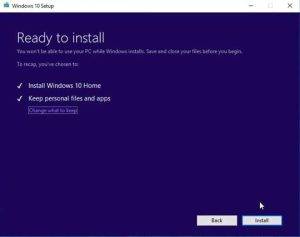


Then I thought about it and seemed to remember that Home didn't allow language packs to be installed? And I thought I read somewhere that in order to install language packs that you had to upgrade Home to Pro first? This - almost says that, but it makes a distinction between Home and Home Single Language. (And the OP might be as well.) At first I was going to answer the OP withĪnd I was going to provide a link showing how to install, or remove, language packs for Windows 10. Oh well, it will get better.Īdmittedly, I'm just as confused as you are jaclaz. If you’re hesitant to switch, the good news is you won’t be committed to Windows 11 after you upgrade. You can try Windows 11 right now if you sign up for the Insiders program, but Windows 11’s public release won’t be ready for everyone until late 2021 or early 2022. My son came down with COVID last week (mostly asymptomatic and he's doing fine and recovering well) and I just found out an hour ago that I have COVID as well - not so asymptomatic - so I really feel like crap. Thankfully, you’ll get 10 days to try it before the update is permanent. I'd be interested to hear from the OP what indeed were his motivations for wanting the "Single Language" version.Īs to what any of this means to the conversion instructions, I have no idea and frankly don't care, because:ġ) I have no interest in any Home version of any MS OSĢ) I have no interest in any version of Windows 10 This is its single biggest advantage as your windows will not be unnecessarily cluttered with multiple language packs that you may rarely use.

It has a couple of differences from the conventional Home Edition - chief among them the fact that the operating system provides only one system language option. Windows 10 (Single Language) is essentially part of the Windows 10 Home package and often comes preinstalled in most Windows 10 laptops.


 0 kommentar(er)
0 kommentar(er)
